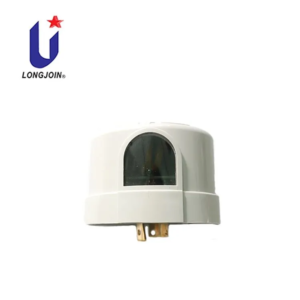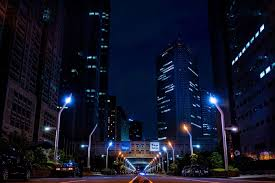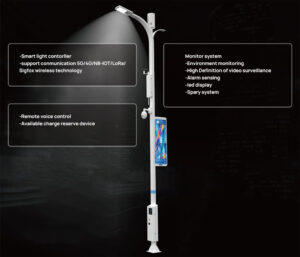How Smart Light Controllers Are Shaping the Future
Overview of Brazil's Lighting Market
Brazil's Role in Latin America's Lighting Market
Brazil is the largest lighting market in Latin America. It holds a leading position due to its size and urbanization. The country’s lighting market is growing quickly. Smart lighting solutions are increasingly in demand, especially those involving automation like photocell systems. Brazil’s expanding cities and energy-saving initiatives are pushing the growth of new technologies in the sector.


Key Players and Consumer Preferences
The lighting market in Brazil consists of numerous local and international manufacturers. Companies in Brazil are now focusing on products that offer energy efficiency and automation. Consumers prefer systems that provide cost savings and minimal maintenance. This makes photocell-based products very attractive. These sensors help manage street lighting effectively. It also saves energy and increases their lifespan.
The Shift Toward Energy-Efficient Lighting Solutions
Brazil is increasingly adopting energy-efficient solutions. At the frontline is photocell-enabled lighting. These products automatically adjust the lighting depending on the surrounding light. This reduces energy use. The growing shift toward LED lighting is one of the key drivers of this market. Smart lighting technologies like photocell controllers play a big role in these improvements.
Applications of Smart Light Controllers
How Smart Light Controllers Work
Smart light controllers are devices that automatically adjust lighting based on various environmental factors. A photocell is one such controller that helps detect ambient light. When daylight is sufficient, it turns off the lights. Likewise, when it gets dark, the photocell activates the lights. This makes sure that energy isn’t wasted.
Benefits of Energy Savings
A big advantage of using photocell-based systems is the huge energy savings. These systems ensure that lights are used only when necessary. By automatically adjusting to environmental conditions, photocell controllers help reduce electricity consumption. This leads to lower electricity bills for municipalities. It also decreases overall energy demand.
Improving Street Lighting Systems with Automation
Smart controllers, such as photocell devices, are transforming street lighting systems. These controllers help regulate streetlights based on real-time conditions. For example, photocell switches adjust the brightness when there’s no need for full illumination, reducing energy use. This automated control increases the reliability and efficiency of urban lighting networks.
Data Collection and Maintenance Advantages
The photocell systems also provide data that can be used for maintenance. When a streetlight malfunctions or requires maintenance, the system can send alerts. This helps local authorities act promptly, reducing downtime and repair costs. The ability to monitor lighting systems remotely makes it easier to maintain large-scale urban lighting systems.
Case Studies in Outdoor Lighting Projects
Rio de Janeiro’s Smart Lighting Implementation
Rio de Janeiro has taken steps to incorporate smart lighting. The city installed photocell-controlled streetlights that adapt to changes in natural light. The system ensures streetlights only operate when needed. This has led to energy savings and improved sustainability efforts. Technology contributes to a smarter and greener urban environment.
São Paulo’s Adoption of Smart Controllers
São Paulo is another city that has embraced smart lighting technologies. Photocell devices are used throughout the city to adjust streetlight brightness. By using these sensors, São Paulo reduces its energy consumption significantly. This smart lighting system improves city safety while minimizing energy waste.
Other Brazilian Cities Embracing Smart Lighting
Brazil’s other cities are also now following the example of Rio and São Paulo. These cities are gradually adopting photocell technology.
Investment in Street Lighting Projects (2020–2024)
| City | Investment (USD Million) | Year of Major Upgrade | Key Technology Implemented | Projected Energy Savings (%) |
| São Paulo | 150 | 2022 | Smart Photocontrol Systems | 35% |
| Rio de Janeiro | 120 | 2021 | LED + Photocontrol | 30% |
| Curitiba | 90 | 2023 | Smart LED Streetlights | 28% |
| Manaus | 60 | 2022 | Photocontrol Automation | 25% |
| Recife | 50 | 2024 | IoT Integration | 33% |
Market Access and Regulatory Requirements
Importance of INMETRO Certification
Manufacturers looking to enter the Brazilian lighting market must comply with local regulations. One of the most important certifications is the INMETRO certification. This certification makes sure that lighting systems meet quality and safety standards.
Navigating the Certification Process
The process to obtain INMETRO certification requires testing and quality assessments. Manufacturers must ensure that their photocell products are up to standard. Once certified, these products can be marketed in Brazil. This makes sure they are reliable and safe for end-users.
Additional Regulatory Compliance for Manufacturers
Brazil has additional regulations that manufacturers must meet, particularly concerning energy efficiency. The photocell products must conform to these standards. This make sure that the lighting solutions contribute to energy-saving goals. It also ensures it meets the country’s sustainability objectives.
Future Prospects
Growth Potential of Smart Light Controllers in Brazil
The future of smart light controllers in Brazil is promising. As cities continue to expand and energy-saving technologies become a priority. The demand for systems like photocell controllers will also increase. The government’s commitment to sustainability further supports the growth of smart lighting solutions.


Public-Private Partnerships in Street Lighting Projects
Public-private partnerships (PPP) are expected to play an important role in Brazil’s smart lighting future. These partnerships can help fund and implement smart street lighting systems. Photocell technology will be integral to these projects. It will increase energy efficiency and reduce municipal costs.
Overcoming Challenges in Smart Lighting Adoption
Though the use of smart lighting is increasing, there are problems too. The cost of installing photocell systems can be high. Many cities may lack the necessary infrastructure. But, the long-term savings in energy costs make these systems a valuable investment.
FAQs
What is a photocell in smart lighting?
A photocell is a sensor used in smart lighting systems. It detects the surrounding’s available light. Then it automatically turns lights on or off based on the surrounding light conditions. This saves energy.
How do photocells help reduce energy consumption?
They make sure that lights are only on when needed. They turn off streetlights during the day. At night, adjust the brightness. This reduces energy use and lowers costs.
Are photocell devices easy to integrate into existing lighting systems?
Yes, photocell devices can be easily integrated into existing lighting systems. They are compatible with various types of street lighting. This makes them a cost-effective solution for upgrading to smart lighting.
External link
http://www.inmetro.gov.br/english/





